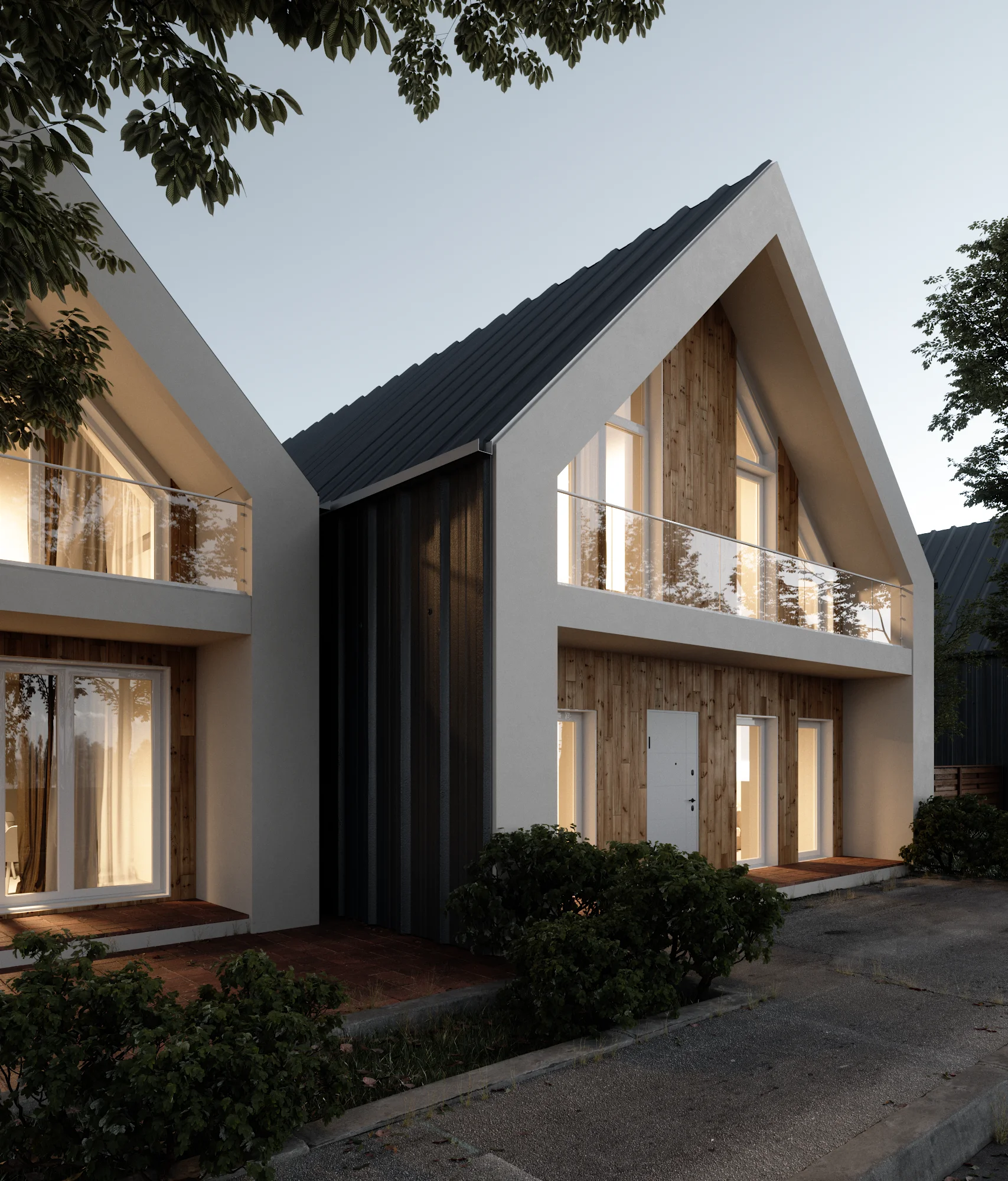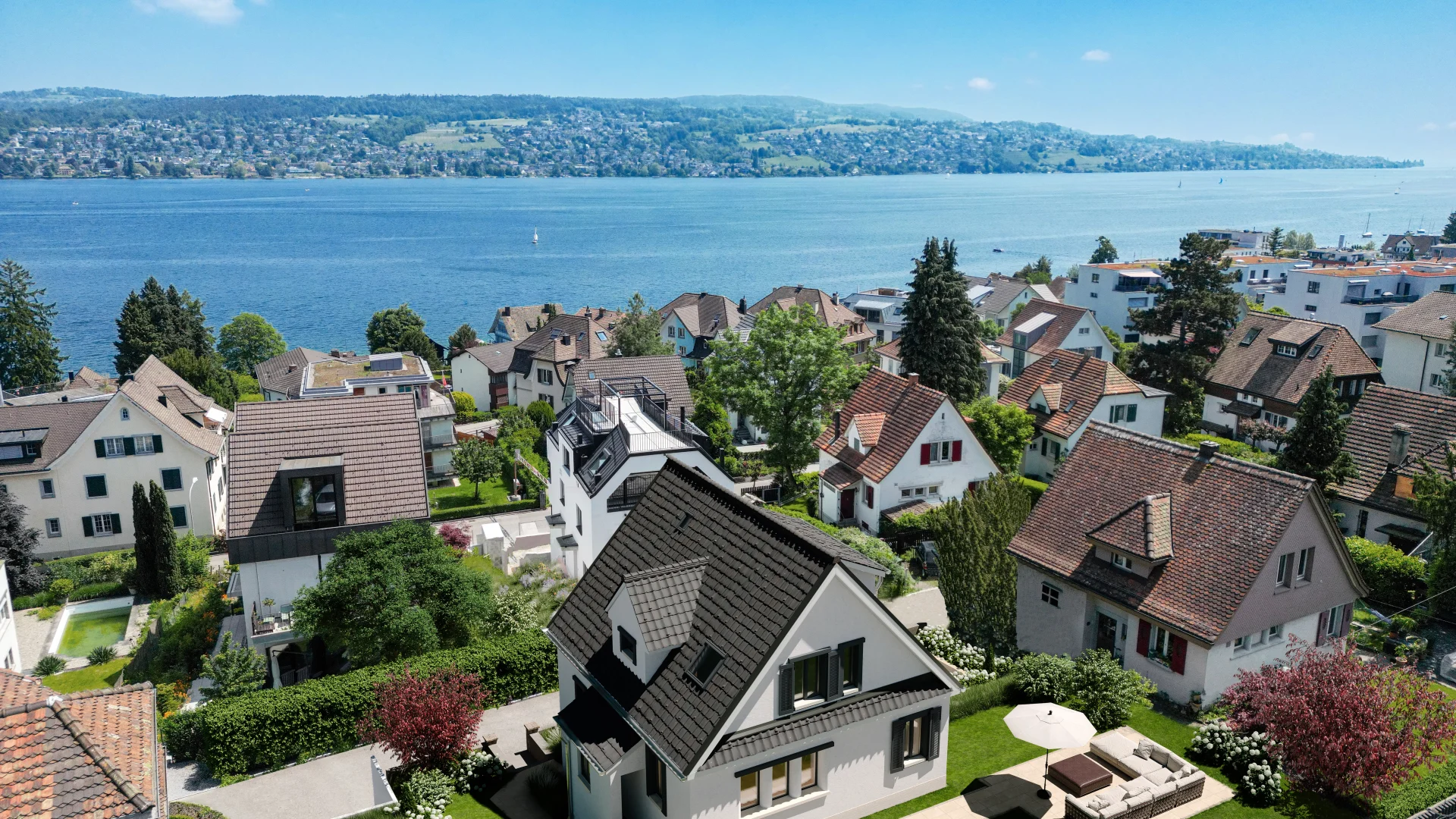Immersive digital experiences have become the norm in our technologically-driven world, and the magic behind these visually captivating scenarios is real-time rendering. This term refers to the instantaneous process of creating an image from a model by means of computer software, allowing for real-time interaction and exploration. Real-time rendering stands at the intersection of art and technology, providing the bedrock for video games, virtual reality, and various simulations.
The significance of real-time rendering cannot be overstated. It serves as the backbone for many sectors, ranging from entertainment to architecture and education, fueling immersive, interactive experiences. The advent of real-time rendering software has redefined our perception of digital spaces, making it possible to produce images at a speed rapid enough to create the illusion of movement, essentially forming the essence of real-time 3D rendering.
What is Real-Time Rendering?
At its core, real-time rendering is a complex process within the realm of computer graphics, wherein 3D models are instantly converted into 2D images or animations through a rendering engine. The marvel of this method lies in its capacity to simulate movement and interaction in real-time, providing immediate feedback in response to user input, a feature that is particularly critical in interactive applications like gaming and virtual reality.
Unlike traditional real-time rendering software that might take hours to generate a single frame, real-time rendering operates in a continuous feedback loop. This is possible through an efficient manipulation of geometric data, textures, and physical properties like light and shadow. The rendering software then calculates these elements at an astounding speed – typically 30 to 60 frames per second. The result? An immediate, smooth, and visually engaging representation of virtual environments.
The distinction between real-time rendering and pre-rendered graphics is akin to comparing a live theater performance to a recorded movie. While pre-rendered graphics offer high levels of detail and realism, they are fixed and cannot adapt to user input. On the other hand, real-time rendering, though it may compromise on some visual intricacies for speed, fuels the interactive nature of the gaming industry and the creative process of VR design, thereby engendering immersive, dynamic experiences that continue to revolutionize digital interaction.
Why is Real-Time Rendering Important?
The importance of real-time rendering lies in its ability to foster interactive and immersive experiences. It empowers users to explore and manipulate 3D digital environments in real time, enabling immediate engagement with the virtual world. Imagine a creative director for a video game who, through the use of software like Unreal Engine, can see the effects of their design decisions instantly, adjusting elements like lighting, texture, and spatial layout with just one click.
This not only streamlines the creative process but also opens the door to real-time collaboration and improvisation. For instance, in the realm of virtual reality, real-time 3D rendering allows users to modify their surroundings actively, generating an immersive experience that reacts to their presence and actions.
Moreover, real-time rendering is no longer confined to the gaming or entertainment industries. For example, architects can use it to create intricate, navigable models of their designs, providing clients with an interactive preview of the final product. Similarly, educators can leverage this technology to create dynamic and engaging teaching materials, bringing abstract concepts to life for students
Importantly, real-time rendering also holds potential for brand engagement, with registered trademarks and products being showcased in 3D rendering platforms for customers to explore and interact with in detail.
In summary, real-time rendering is transformative, revolutionizing not just the way we consume and create digital content, but also the way we learn, work, and interact with various industries. Its future potential is vast and exciting, promising to bring ever more realistic and immersive experiences to our fingertips.
The Mechanics of Real-Time Rendering
The wizardry behind the creation of stunning, responsive 3D images in real time lies in a suite of techniques employed by real-time rendering engines. This section explores these key techniques, and elucidates how they contribute to the remarkable quality and realism of rendered images.
Key Techniques
One of the primary methods used in real-time rendering is rasterization, a technique that converts geometric data into a 2D image. Operating at impressive speeds, rasterization produces visuals for fast, real-time user interactions. However, while efficient, it can sometimes oversimplify the complexities of 3D space.
Ray Tracing, on the other hand, aims for higher fidelity, simulating the physical behavior of light as it bounces off objects. This method, while more computationally intensive, produces a stunning level of realism, especially when it comes to reflections and refractions in a 3D-rendered scene.
Shadow Mapping and Texture Mapping are two additional techniques integral to the rendering process. Shadow mapping adds depth and realism by appropriately casting shadows in relation to light sources. Texture mapping involves applying 2D images to 3D models, giving them a realistic appearance and enhancing the perceived depth of the rendered object.
Physically Correct Rendering (PCR) pushes for even greater realism by simulating the complex interaction between light and materials. While PCR may demand more from the rendering engine, the resulting images carry an authenticity that closely mirrors the real world.
Level of Detail (LOD) is a technique used to manage rendering time. It adjusts the complexity of 3D models based on their proximity to the viewer, rendering distant objects with less detail to save computational resources and maintain smooth real-time interaction.
Role of these Techniques
All of these techniques play a critical role in shaping the visual quality and realism of the final real-time render. Rasterization ensures swift rendering times, making possible the interactive, real space 3D experiences we encounter in modern games and simulations. Ray Tracing and PCR work in tandem to emulate the nuanced intricacies of how light behaves, producing visually compelling scenes with stunning authenticity.
Shadow and Texture Mapping enrich these scenes further by contributing a sense of depth and tangible realism to 3D objects. Lastly, LOD plays the crucial balancing act between image quality and performance, ensuring that real-time rendering can provide high-quality visuals without compromising on the interactivity and responsiveness that defines it.
These intricate mechanics, though complex, seamlessly integrate to form the real-time render engine, creating captivating, real-time rendering for immersive experiences with just one click. They are the unseen gears behind the real-time rendering revolution, turning the seemingly impossible task of creating and manipulating realistic 3D environments on the fly into a reality. Each technique, each process, and each decision in the rendering pipeline collectively enhances our perception of the digital world, making the fantastical concept of real-time 3D rendering an everyday reality.
Top Real-Time Rendering Software
The rapidly evolving digital world offers a broad range of real-time rendering software options, each equipped with unique features and tailored for specific applications. From real-time rendering in video games to architectural visualizations, these platforms fuel immersive experiences and empower the real-time rendering in the design process.
Overview
At the forefront of the real-time rendering landscape are several key players. Unity and Unreal Engine are widely recognized for their versatility and extensive use in game development. Twinmotion and Enscape, meanwhile, have made their mark in real-time rendering architecture and design, while Chaos Vantage is renowned for its high-quality visualizations.
Detailed Features
Unity is a powerful, user-friendly platform that facilitates the creation of both 2D and 3D games. Its strength lies in its broad compatibility and robust asset store, making it an ideal choice for developers seeking to create a diverse range of interactive experiences.
Unreal Engine stands out for its visual fidelity and sophisticated physics engine. It’s a preferred choice for many game developers, and its real-time rendering capabilities have also found applications in fields like architecture and film for creating high-quality real-time visualizations.
Twinmotion and Enscape are specially designed to cater to the needs of architects and designers. They make it possible to render detailed, lifelike scenes from CAD data in real time, speeding up the design process and enhancing client presentations. These platforms bring benefits to the architectural design process by allowing instant visualization of design changes, facilitating better communication, and accelerating decision-making.
Chaos Vantage, part of the Chaos Group family, is recognized for its exceptional quality in real-time rendering visualization. Its ability to handle complex and large-scale scenes in real time makes it particularly valuable for professionals in fields like architecture, design, and visual effects.
Selecting the right real-time rendering software depends on your specific needs and project requirements. If you’re aiming for a high-fidelity game or an architectural visualization, Unreal Engine or Chaos Vantage might be your best bet. For a more streamlined game development process or for creating interactive mobile apps, Unity could be the most suitable. Twinmotion and Enscape would serve you best when real-time 3D rendering is required in the architectural design process.
Regardless of the software you choose, adopting real-time rendering does come with challenges, such as the need for powerful hardware and the learning curve associated with mastering new software. However, the benefits of real-time rendering – increased interactivity, improved design understanding, and immersive experiences – certainly outweigh the initial hurdles.
Applications of Real-Time Rendering
From crafting immersive video games to revolutionizing design presentations, real-time rendering has diverse applications across various industries, transforming the way we conceive, develop, and experience digital content.
In the gaming sector, real-time 3D rendering is the driving force behind the vibrant, interactive worlds that players navigate. By rapidly calculating and updating graphics, it allows for dynamic gameplay, where every action can trigger an immediate, visual response.
Film and television production, too, are reaping the benefits of real-time rendering. It aids in previsualization, allowing directors and cinematographers to explore and plan shots with a clear understanding of how CG elements will interact with live-action footage. This technology also facilitates the use of virtual production techniques, where real-time rendered environments replace traditional green screens, offering more creative control and real-time visual feedback.
Architectural visualization has been transformed by real-time 3D rendering. It allows architects and designers to create detailed, walk-through simulations of their designs, enhancing client presentations and facilitating better understanding of the real-time rendering process. This implementation of real-time rendering provides a dynamic design feedback loop, wherein changes can be visualized instantly.
The field of real-time rendering and virtual reality is underpinned by real-time rendering. By creating and updating graphics in real time, users can explore and interact with 3D environments as if they were present in them, engendering immersive experiences.
Looking forward, real-time rendering promises to continue reshaping the landscape of digital design. As hardware capabilities improve and software becomes more sophisticated, we can expect to see an increase in the fidelity and complexity of real-time rendered content, from hyperrealistic video games to comprehensive architectural simulations.
Emerging technologies like cloud computing and machine learning also present exciting possibilities for the future of real-time rendering in design. Cloud-based rendering could democratize access to high-quality real-time graphics, while machine learning could optimize the rendering process, leading to even more realistic and responsive visuals.
In summary, real-time rendering is much more than a tool for the design industry; it’s a pivotal technology that continues to redefine our interaction with the digital world, pushing the boundaries of what’s possible in design, entertainment, and beyond.
Challenges and Solutions in Real-Time Rendering
Real-time rendering, while offering remarkable capabilities, presents its fair share of challenges. Understanding these complexities and finding effective solutions is crucial for optimizing the rendering process and harnessing the full potential of this technology.
One prominent challenge in real-time rendering is the cost implication. Achieving high-quality real-time visuals often requires powerful hardware and optimized software. Investing in robust graphics cards, CPUs, and memory can be a significant financial consideration. However, advancements in technology and the availability of cloud-based rendering services are potential solutions that can help mitigate these costs.
Real-time rendering also serves as a valuable design communication tool. However, conveying complex design ideas accurately can be challenging, particularly when dealing with intricate lighting and material properties. Overcoming this challenge involves mastering the software and understanding how to leverage its features effectively to accurately represent the design intent. This may require additional training or collaboration with skilled artists or technical experts.
Another crucial aspect is using real-time rendering for design concept testing. Design iterations and rapid feedback play a pivotal role in refining and improving designs. Real-time rendering facilitates instant visualization of changes, allowing designers to evaluate various options quickly. However, balancing rendering time with the need for immediate feedback can be a challenge. Employing techniques such as level of detail (LOD) and progressive rendering can help strike a balance between rendering quality and speed.
The evolution of real-time rendering in the design industry has been remarkable. However, as the technology continues to advance, it introduces new challenges. Adopting new software, staying updated with the latest rendering techniques, and maintaining compatibility with evolving hardware can pose obstacles. Regular training, keeping up with industry trends, and engaging in communities or forums dedicated to real-time rendering can help overcome these challenges.
In conclusion, while real-time rendering brings unprecedented capabilities to the design industry, it is essential to navigate the challenges it presents effectively. Addressing cost implications, harnessing real-time rendering as a design communication tool, leveraging it for design concept testing, and adapting to the evolving landscape of the industry will ensure optimal use of this transformative technology. By embracing the solutions and workarounds available, professionals can unlock the full potential of real-time rendering in design, fueling creativity and pushing the boundaries of visual experiences.
Conclusion
Real-time rendering is a transformative technology that has revolutionized various industries, from gaming and film production to architecture and design. It enables interactive, immersive experiences and empowers designers to bring their visions to life with unprecedented speed and realism.
Throughout this article, we have explored the definition and significance of real-time rendering, delved into its mechanics, examined popular software options, and discussed its applications and challenges. We have seen how real-time rendering enhances design feedback, serves as a powerful tool for communication, and facilitates concept testing.
As you delve deeper into the world of real-time rendering, I encourage you to explore its potential further. Experiment with different software options, embrace new rendering techniques, and keep an eye on emerging technologies that promise to push the boundaries of real-time rendering even further.
Your thoughts, ideas, and experiences with real-time rendering are valuable, and I invite you to share them in the comments section. Let’s engage in a dialogue and learn from each other’s perspectives. Together, we can continue to push the boundaries of what’s possible with real-time rendering and unlock new realms of creativity.
In closing, real-time rendering is a dynamic and ever-evolving field. Its impact on the digital landscape is profound, and its potential for innovation and transformative experiences is immense. So, let’s dive in, embrace the possibilities, and shape the future of real-time rendering together.














